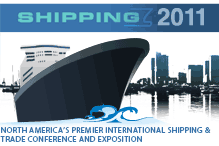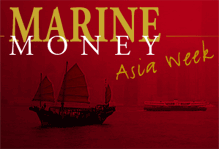
Megacore
Omega Navigation Enterprises announced today the formation of a 50/50 joint venture with Topley Corporation, a wholly owned subsidiary of Glencore International AG, to be named Megacore Shipping. Companies owned by the partners have novated their original shipbuilding contracts with Hyundai Mipo consisting in total of 10 newbuilding 37,000 DWT product chemical carriers (five from each partner) to companies controlled by Megacore. The order has been converted to two MR1s and 7 LR1s, while one MR1 has been suspended and remains an option. Under the new agreement, three vessels will deliver in 2010, four in 2011 and two in 2012. Even with the changes, the overall aggregate purchase cost based on contract price remains similar to the original contracts, while the amount of equity that would to be invested has been reduced based upon the vessels’ fair market value.
Continue Reading
Co-Investing
Yesterday, Euroseas Ltd. announced that it has entered into a letter of intent with Eton Park Capital Management (“Eton”), on behalf of one or more funds managed by it, and Rhone Capital III (“Rhone”) to form a joint venture to pursue investment opportunities in shipping. Euroseas will contribute $25 million to the venture with Eton and Rhone expected to contribute $75 million each.
The agreement includes an option for Eton and Rhone, exercisable at any time after two years, to exchange all or part of their interest in the joint venture for equity in Euroseas at a price to be based upon the comparable values of the company and joint venture at the time of exercise.
Continue Reading
Yes! IPOs Are On the Way Back – Sort of
Individuals involved in the capital markets have recently opined that shipping IPOs will soon return as private owners have realized the advantages of being public in these capital constrained times. In the interim, Maxim Group and Further Lane Securities are currently circulating a private deal, which could, down the road, become an IPO. Pyxis Holdings, a company sponsored by Mr. Valentinos Valentis, intends to sell 15.5 million units, under Rule 144A, to qualified institutional buyers. Each unit will have an offering price of $10.00 and will consist of one share of common stock and 1/5 of one warrant to purchase a single common share. The exercise price for a warrant will be $11.50. Gross proceeds are anticipated to be $155 million. In addition, Mr. Valentis has agreed to purchase, concurrently with this offering, 2.2 million units, raising an additional $22 million in proceeds. Mr. Valentis, in addition, will receive $14.5 million in the form of Class A units in exchange for his contribution of the vessels in the existing fleet as well as 1,344,630 Class B subordinated shares and founder warrants. After the offering, Mr. Valentis will control about 24.3% of the shares.
Continue Reading
Bonheur Bond
Last week, Bonheur ASA issued five-year senior unsecured floating rate notes, priced at 3 month NIBOR + 450 bps. The main terms and conditions of the deal are highlighted in our Guts of the Deal contained herein. The bond carries a shadow rating of B+, two notches lower than the issuer (BB), as a result of the structural subordination to all the debt in the subsidiaries. Proceeds will be used for general corporate purposes.
Continue Reading
Red Alert
Last Monday, Hong Kong listed shipbuilding, tanker operator and oil storage group Titan Petrochemicals Group (“Titan”) has announced the appointment of Goldman Sachs (Asia) and ING Bank (Singapore Branch) to restructure its existing USD 315.4 million bonds due March 2012. This could potentially result in bondholders losing as much as 70% of their investments.
Titan is offering its bondholders USD 199 in principal amount of the new notes it plans to issue, in addition to 3,075 new shares in Titan and USD 12.50 in cash for each USD 1,000 held as the principal amount of the existing notes. Guaranteed on a senior basis, the seven year USD 400 million bonds were previously issued in March 2005 and have an outstanding principal amount of USD 315.4 million. Continue Reading
A Good Citizen
For the benefit of our readers in Asia, we reproduce some excerpts on First Ship Lease (“FSL”)’s suspended USD 200 million notes offering from our sister publication Freshly Minted before we take a little closer look at the motivations behind the shipping trust’s offering.
“Philip Clausius is a committed man. He moved FSL to Singapore and has become a fixture in the shipping community. But even this was not enough. To further demonstrate his commitment and cement his presence locally, he has become a Singaporean citizen. So it came as no surprise that when the idea of a bond issue was broached, Mr. Clausius wanted a deal done that would tap both the Asian and U.S. investor bases, not just a straight 144A issue marketed to U.S institutional investors, which may have well been easier. Mr. Clausius understood that once established as a “local” issuer in Asia the rates would become highly competitive. Continue Reading
Shariah Shipping Funds In The Works
A fortnight ago, we wrote about Safeena’s first vessel acquisition and shortly after, another Islamic shipping fund is about to make a splash. Cyprus listed SFS Group and Kuwait Finance House will be launching their shipping fund, Global Shariah Shipping Fund, with the aim to raise USD 150 million for the shipping assets.
The seven year fund has a focus on offshore support vessels and is looking for investors in Asia, the Middle East and Europe. Investors can expect a 7% return per annum with quarterly cash distributions. More importantly, the two sponsors will be putting money where their mouths are, by pledging to contribute at least 10% equity to the fund, up to a maximum of USD 15 million. The fund plans to leverage up to four times the total equity committed, assuming that banks are able to provide 80% debt financing. Continue Reading
Setting Sights on Overseas
Danish shipowner Torm has signed a ten year USD 167.3 million loan facility with a syndicate of banks led by Bank of China and Societe Generale. The funds will be used to cover 60% of the cost of six 53,000 dwt MR product tankers, each ordered at USD 46.5 million a piece from Guangzhou Shipyard International. Out of the USD 167.3 million facility, USD 83.7 million will be unsecured loans and the other USD 83.7 million in the form of buyer’s credit. This is also the very first time in a foreign syndicated loan that China Export & Credit Insurance Corporation (“Sinosure”) will underwrite the country risk in relation to the buyer’s credit. Torm will have to fork out the remaining 40% equity. Continue Reading
JBIC Beefs Up Export Credit Support For Shipping
All of us are well aware that a few governments in Asia hold the fate of shipbuilding and thus the orderbooks in their hands. China and South Korea’s strong support for the shipyards come as no surprise as governments tend to bolster industries of national importance. Support from the Japanese government for its shipbuilding industry has been rather muted. The Japan Bank for International Cooperation (“JBIC”) – the merged entity of Export-Import Bank of Japan and the Overseas Economic Cooperation Fund Japan for instance has not provided any export loans for the shipping sector in their fiscal year 2008. But this has changed.
Marine Net reported last week that JBIC has agreed to provide Turkish Bank, Turkiye Is Bankasi (“Isbank”), an export credit line of JPY 10 billion (USD 111 million) with the objective to assist Turkish shipowners in the financing of their newbuildings at the Japanese shipyards. This will be JBIC’s first export credit facility dedicated for the shipping industry. JBIC currently provides direct loans to foreign importers and financial institutions in the form of buyer’s credit (B/C) and bank-to-bank loan (B/L) to facilitate the financing of the imports from Japanese machinery and equipment manufacturers. Continue Reading
Asian Shipping Bond Issuances Hit USD 7.3 Billion In 2009
With bank debt being still hard to come by, the bond market for shipping companies in Asia continues to be active with transactions that ran the gamut from the simplicity of straight unsecured issue to the complexity of Islamic debentures. Bonds have become an extremely important source of capital for both shipbuilders and shipping companies in Asia and many are still working hard to seize this fund raising opportunity before any sudden changes in investors’ risk appetite. Continue Reading







